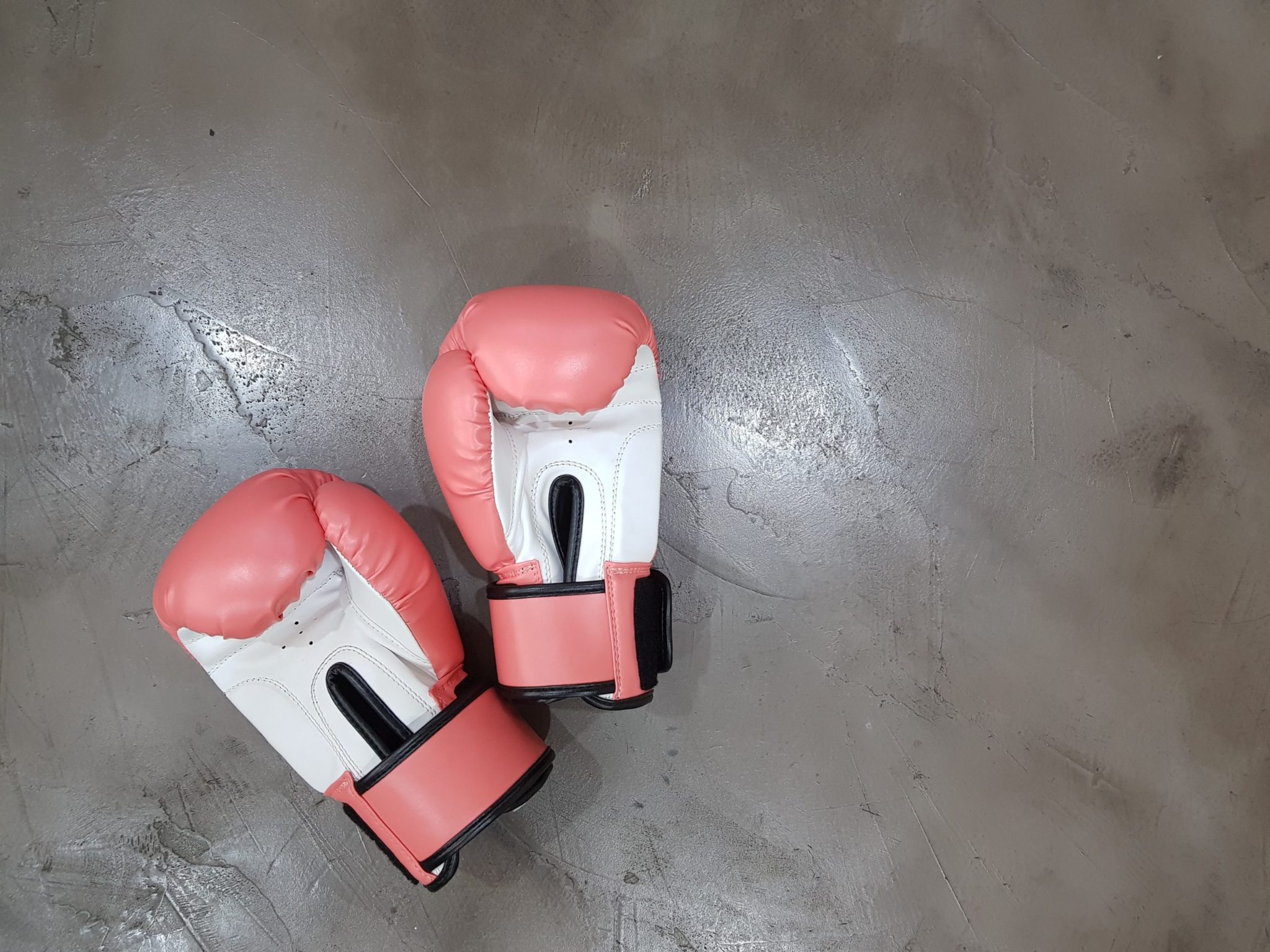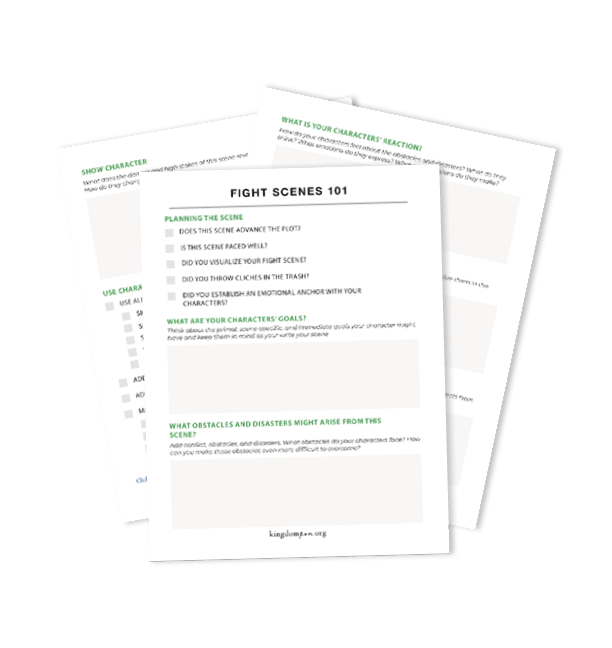By Mark Kamibaya
You’ve got your fight scene all figured out. You’ve followed the five basic scene planning principles and have made sure to keep character at the forefront. Now for the hardest part: writing the fight scene.
A picture is worth a thousand words (or so the saying goes). So if a picture is worth a thousand words then how many words is a movie worth (24 frames per second and about two hours long)? Movies seem to have supremacy over books especially in the area of fight scenes. Action is very much a visual journey. Would you rather read:
John turned left and punched the man with his right hand, but the man dodged the punch and returned that punch with another punch straight to John’s face.
or see it happen? Movies even have the advantage of hearing the sound of things we’ve never heard before supported by the greatest emotion mover, music.
But if movies reign supreme, then why do we always hear that the book is better? There are only two advantages that books have over movies. And we need to use them to turn something visual, like action, into something experiential.
THE ADVANTAGES OF BOOKS
1. Character Connection
The power of this is in the reader. Books can show the reader the thoughts of characters. Their internal choices and battles. Readers step into the shoes of the character and join them on a journey at the same time.
This is why the book is always better than the movie. You can never be closer to someone other than yourself than with the character of your favorite book. The depth of the relationship is so close it cannot exist off the page.
Note: Actually it can exist off the page. But only divinely.
2. Imagination
This may seem to be a barrier to a complete experience. After all, isn’t the eye candy of movies so much more amazing then the imagination of our simplistic minds? The advantage is, again, in the reader.
Mental images created by the reader are made to support her worldview and ideas. The reader mentally makes the best possible image with the details given. Since the reader made it, the experience is better for her. Kind of like why homemade food always seems better.
So how can we use this as leverage over movies? You need to push the visual into the back corner and bring up the imagination. Instead of saying
Alex’s arms were pinned against his own back. His captor had twisted Alex’s left arm up making the joint bend in a way it was not supposed to. He tried to get out of the hold, but the pain forced him to stop.
Why don’t you just say something like:
The captor twisted his arm. Alex struggled. A sharp sting in his elbow forced him to stop.
The reader’s imagination will fill in all the blanks providing the best picture possible.
So how do you use character connection? Since your reader already has an emotional anchor with your protagonist, you should make the reader experience everything herself. The emotional anchor plus the angst of experience will force the reader to keep on reading. There are three ways to do this:
HOW TO USE CHARACTER CONNECTION
1. Use Your Character’s Five Senses
A scream drilled into her ear. (feeling and hearing also a metaphor)
He tasted the metal scent of blood. (smell and taste)
The fist drew back. A hammer smashed his face. (feeling and sight also a metaphor)
Make the fight experiential.
2. Add External Dialogue and Internal Monologue
Remember one of the things books can do and movies can’t? Hear the thoughts of characters. You can use these thoughts reveal the character of your protagonist. Like making her snobbish:
You would think a hitman would have more style while doing his job.
Or figurative:
The ground suddenly felt like a good place to have some rest. Eternal rest.
External dialogue during a fight seems a little inept, right? Well, sorry, but a story is not real life. Story dialogue is not real dialogue. Story dialogue is realistic dialogue. Big difference.
Think of movies. How many times do people speak during the action scenes? Answer: they shouldn’t speak at all. During life-and-death situations we barely have to time to externally voice our feelings. But we always have people speaking in the action scenes. Why? The life of the story is in the dialogue.
3. Make Them Feel It
This is a remix of using imagination. Don’t describe everything. Instead, make the audience feel it.
Jen blocked the blow to the left, but the next punch met her face.
Vs:
Jen blocked. Her head caved in. The ground came up to meet her. She should be dead.
Even if the punch didn’t actually break her skull, that’s what it felt like. And that’s the way you should describe it.
I’ve explained the concepts of using the reader’s character connection and imagination to bring the fight scene to life. However, if you don’t write the scene well, the reader may skip it. The one and only thing you need to remember is increase the pace.
You can do this through paragraphs. No paragraph should go beyond five sentences.
You can use sentence structure. Use basic, kindergarten sentence structure. (Do they teach sentence structure in kindergarten?)
Don’t overload your sentences. Use short vivid words. Avoid adverbs.
Use a variety of words. The fifty-third occurrence of “punch” won’t go well with Mr. Reader.
Use fragments. It works. Promise.
By now you should have noticed something. You approach a fight scene in the same way you approach all scenes. Differences are minute. Similarities abound. Careful planning and considerate writing will hook your reader in to not only your fight scene, but also your story.
If you enjoyed these articles, be sure to download the free workbook that goes with this lesson. This will help you implement everything you learned today and give you everything you need to create great fight scenes.
Mark Kamibaya
Mark Kamibaya is a sixteen-year-old missionary kid from the Philippines. And a self-proclaimed weirdo. He has been in private school and taken some college classes, but has been homeschooled for most of his life. He has always had a great love for stories and started writing at the age of twelve. He mainly writes realistic science fiction and can’t hold all the concepts spilling out of his brain. Mark hopes to one day become either an author or a counselor. Preferably both. Besides, writing he enjoys soundtracks, exercising, movies, and systematic theology. That’s in reverse order.
For feedback he can be contacted at mark.kamibaya@gmail.com



Wow. I really needed to read this. We covered a lot of this over at the forum a few weeks ago, but I needed it all pinned down in concise points like that. I’ve got a lot of action scenes coming up, most of them fight scenes, in my Work in Progress, so this is really helpful.
As I continue venturing further and further into the world of quality fantasy (yeah, didn’t you know that was a genre?) I am beginning to notice that fight scenes are impossible to avoid. So you might as well make them as gripping and thrilling as you can. If they’re going to be there… make the best of them.
Glad to be of help! Fight scenes are my pet peeve. Like I hate it when people don’t write them the way I like them (selfish I know). It also happens that popular writing advice agrees with my way of writing fight scenes so I got pros on my side 🙂
Yeah Mark, keep a look out on the forum. Some day I may get desperate enough to post one of my fight scenes there for you and anyone else who wants to to critique.
No. I’m serious.
That’s brave @kate-flournoy.
Brave.
If anyone wants to add something onto my methodology or doesn’t agree with it just public message me on the KP forum.